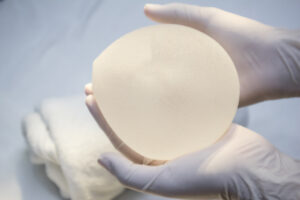 Breast implant infection is a big deal. A breast implant- whether silicone or saline- is a foreign object, so once there is an established infection, it is hard to “clear” it. Antibiotics frequently can’t work, so we turn to breast implant removal. And we know a low grade infection biofilm is linked to breast implant illness and capsular contractures after breast augmentation.
Breast implant infection is a big deal. A breast implant- whether silicone or saline- is a foreign object, so once there is an established infection, it is hard to “clear” it. Antibiotics frequently can’t work, so we turn to breast implant removal. And we know a low grade infection biofilm is linked to breast implant illness and capsular contractures after breast augmentation.
How do you know if the implant is infected though? Commonly there is no easy way to tell. Currently we remove any fluid or swab the area and send it for cultures. What we find commonly is that “nothing grows out” or if you were on antibiotics it won’t let the bacterial sensitivity to antibiotics be seen. Or maybe it was not a bacterial infection but something else, and it wasn’t cultured for that.
So I found this article in the Plastic and Reconstructive Surgery Journal April 2023 very interesting. “Alpha Defensin 1 Biomarker Outperforms Culture in Diagnosis Breast Implant Related Infection: Results from a Multicenter Prospective Study.” They talk about how prompt diagnosis of implant infections are critical to lowering issues, and how there is a “high incidence of false negative microbial cultures.” They propose that Alpha defensin 1 (AD-1) which is an infection biomarker is better than culture to diagnose periprosthetic joint infections with a sensitivity and specificity of 97%. So they thought it is proven in the orthopedic literature….
Is it the same for breast implants?
Study:
- prospective multicenter trial
- they had cases suspected of implant infection (cellulitis, draining wound, or systemic infection with fever) vs. controls (routine implant exchanges and revisions)
- Matched for demographics, antibiotic exposure, etc.
- Implant pocket fluid was collected and sent for microbial culture, AD-1 assay
- the microbial culture included: gram/fungal/acid fast bacterial stain, aerobic cultures on gar plates, aerobic cultures, fungal cultures, acid fast bacterial culture.
- 53 cases were done (20 possible infections vs. 33 controls)
NOTE: AD-1 is an antimicrobial peptide released from white blood cells in response to local pathogen invasions. It is an indirect biomarker for infection. It is good for finding bacteria, but also fungi, spirochetes, protozoa, and enveloped viruses.
Findings?
- Microbial culture failed to grow organisms in 4 suspected infections.
- Gram stain was least accurate (only 25% sensitivity)
- AD-1 was more accurate in diagnosing breast implant infection.
My thoughts?
The AD-1 test was collecting 1cc of fluid from around the implant during surgery. It is super interesting as it seems to be more accurate.
They brought up a bunch of points as to the limitation of their study- small sample size, what level or marker would quantify as “infection,” how does this change when patients are getting radiation/chemo/etc. ?
But I like that there is science looking into how to be more accurate in diagnosis of infection, and the orthopedic surgery literature seems to support this as well.
And if this AD-1 test is more sensitive, could we *maybe* *someday* *pretty please* have a way to test implants nonsurgically for biofilm or infection? That is the dream.
